Design-savvy gardeners know that chartreuse can be combined with pretty much anything, and the range of plant choices is growing every year. Here are some ways to use old favorites, new cultivars and bold accents to give garden spaces added flair.
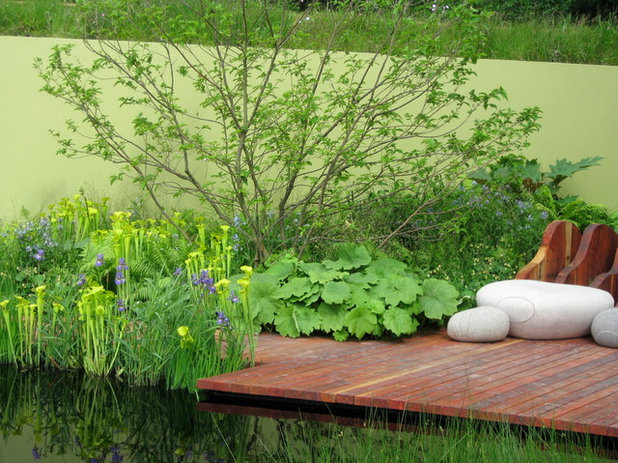
Paintbox Garden
1. Go for impact with a colored wall. This low privacy wall repeats the bright green of yellow pitcher plant (
Sarracenia spp, zones 7 to 10) in this unusual water garden designed by Thomas Hoblyn for London's Chelsea Flower Show.
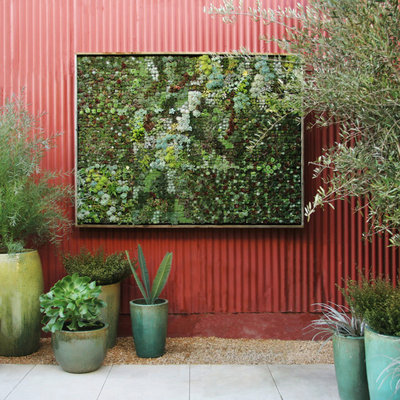
Bright Green
2. Use vertical space. Low-growing chartreuse plants enliven a living wall, complementing the greenish blues of the glazed pottery in this patio at Flora Grubb Gardens in San Francisco. I love how the cool greens pop against the red corrugated siding.
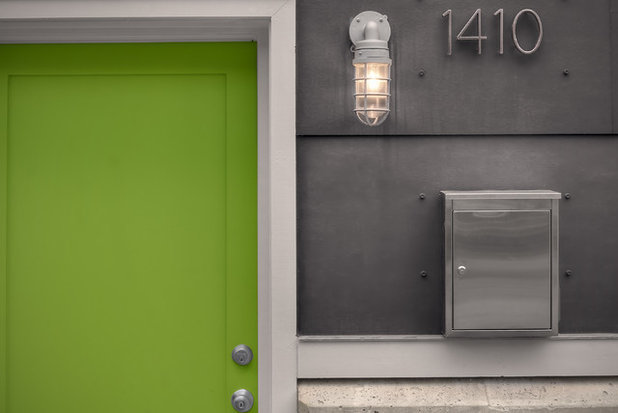
RW Anderson Homes
3. Paint your door. While most of us prefer to stick with traditional colors, a chartreuse entrance is fun in the right setting. The door at this modern Seattle home would look great hung with chili pepper lights wrapped around garlands of ivy.
When to Paint Your Door Green
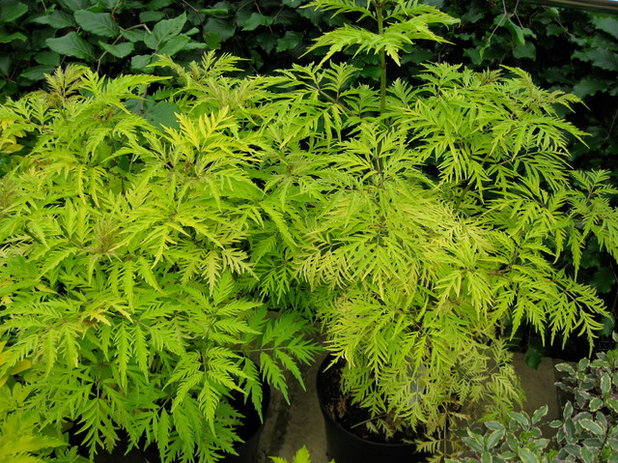
Paintbox Garden
4. Enliven foundation plantings. With its feathery appearance and finely cut foliage, Golden Elderberry (
Sambucus racemosa 'Sutherland Gold', zones 3 to 8) makes a good choice for foundation plantings in shade, and it tolerates wet conditions.

CAROLE MEYER
5. Integrate art with plantings. The homeowners have hung a weather-resistant contemporary art piece on a pool enclosure wall and used chartreuse pillows to pick up its cool mood at this Oregon home. Lime-colored shrubs in containers repeat the theme.
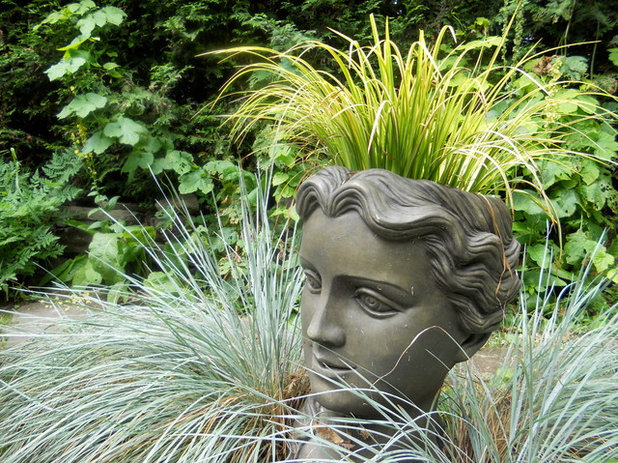
Paintbox Garden
6. Play with form. Bowles Golden Sedge (
Carex elata 'Aurea', zones 5 to 9) forms the golden tuft of hair in this Vermont garden. With its thin, grasslike form, it makes a perfect contrast plant for large-leaf hosta or black cohosh (
Cimicifuga ramosa 'Brunette' or 'Hillside Black Beauty').
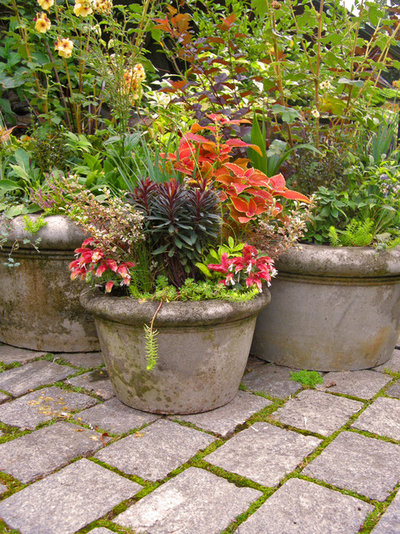
Exteriorscapes llc
7. Bring red into mixed plantings. Containers pop with contrast in this Seattle garden. For maximum impact, pair red or burgundy coleus with golden sweet potato vine in tubs and mix in bright pink annuals for added punch.
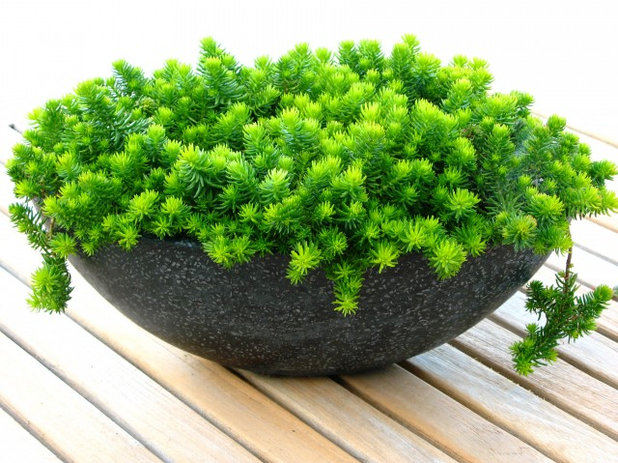
debora carl landscape design
8. Use small plants as decorative objects. I love the simplicity of this tabletop centerpiece in San Diego. The low-growing sedum (
Sedum rupestre 'Angelina', zones 3 to 8) is very touchable, has yellow-green new growth and looks great in this black terrazzo pot.
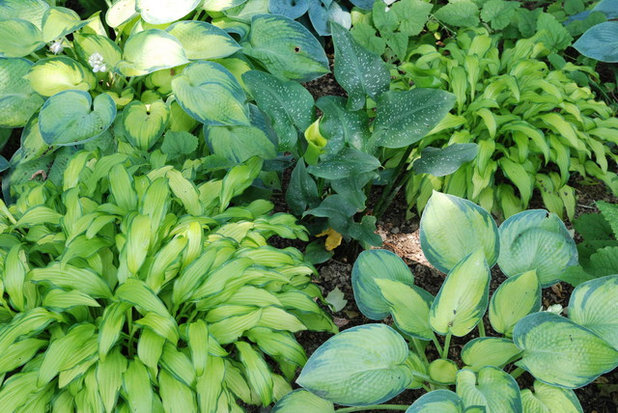
Paintbox Garden
9. Let the shade garden be a swirl of bright green. Hostas (zones 3 to 9) are easily divided anytime from spring through fall, so gardeners have no excuse not to mix and match — frequently. Once you start adding, watch out: Hostas are slightly addictive, as the color permutations are endless.
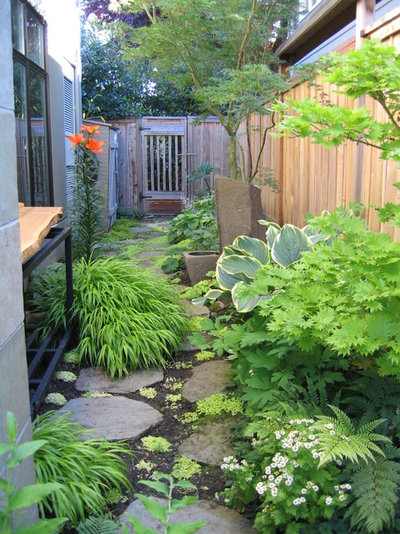
Rhodes Architecture + Light
10. Make a small space feel bigger. Repeated patches of chartreuse bring a sense of brightness to this narrow garden, which might otherwise have felt cramped. Plants with variegated leaves, fine texture and broad forms help liven up the setting, and the orange lily provides good contrast.
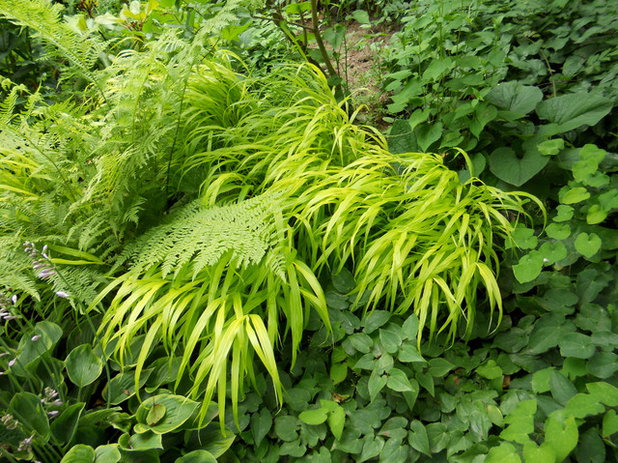
Paintbox Garden
11. Slopes can be beautiful, too. This is 'Aureola' (
Hakonechloa macro 'Aureola', zones 5 to 9), named Perennial Plant of the Year in 2009. Here it has been planted on a shady bank among violets, hostas, ferns and epimedium, and forms a stunning focal point as it spills down the slope.
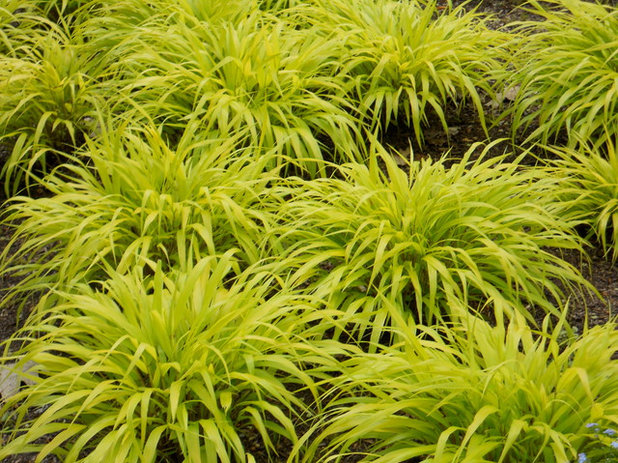
Paintbox Garden
12. Cover the ground with bold color. This mass planting of Japanese forest grass (
Hakonechloa macro 'All Gold', zones 6 to 9) really stands out, doesn't have any variegation and is more intensely yellow than 'Aureola'. It's also suitable for sun and looks great with spreading annuals.
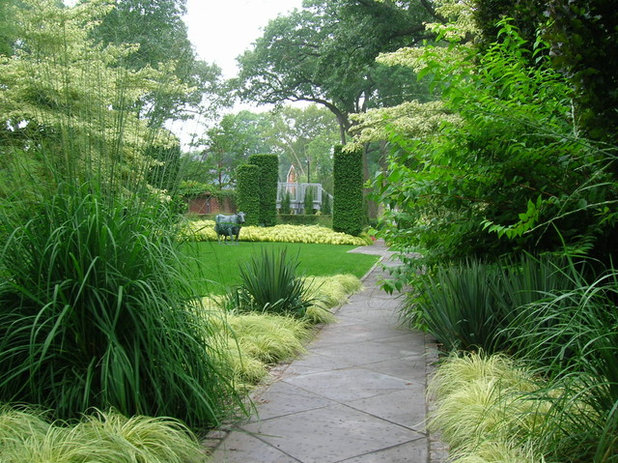 13. Repeat color to draw the eye to focal points.
13. Repeat color to draw the eye to focal points. Do you see the cow? I love how the chartreuse pathway plantings connect with the far bed and bring the eye to the sculpture. It's a harmonious composition that's playful and fun.
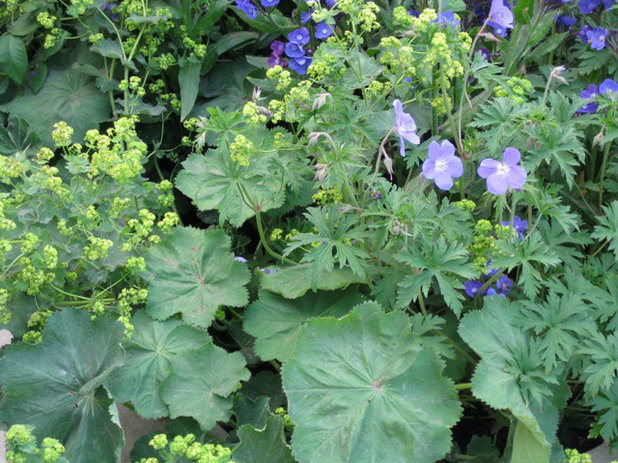
Paintbox Garden
14. Focus on small details. One of the easiest perennials to grow, lady's mantle (
Alchemilla mollis, zones 3 to 7) produces whorls of delicate light green florets on airy stems in midseason that combine beautifully with pale lavender cranesbill.
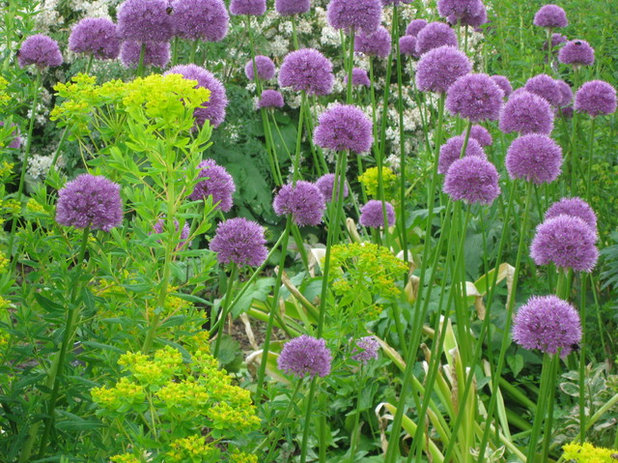
Paintbox Garden
15. Purple makes a great companion color. Try growing ornamental onion (
Allium spp) with spurge (
Euphorbia spp) for cut flower arrangements. The colors clash beautifully, and it all works somehow. Don't ask me how.
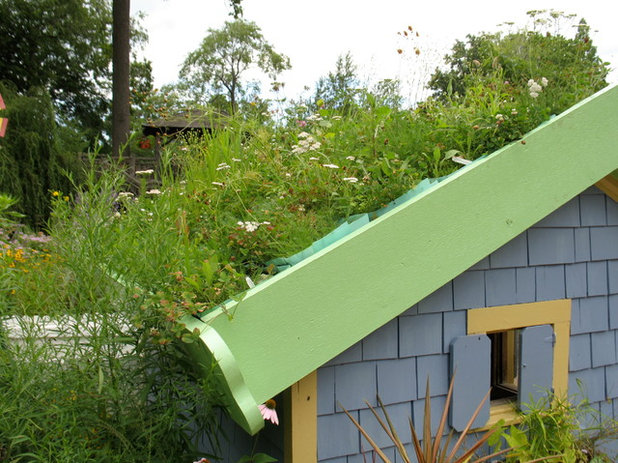
Paintbox Garden
16. Make children's play structures wildly fun. This playhouse at the Cleveland Botanical Garden has a chartreuse painted green roof that's filled with prairie plants — definitely eye catching.
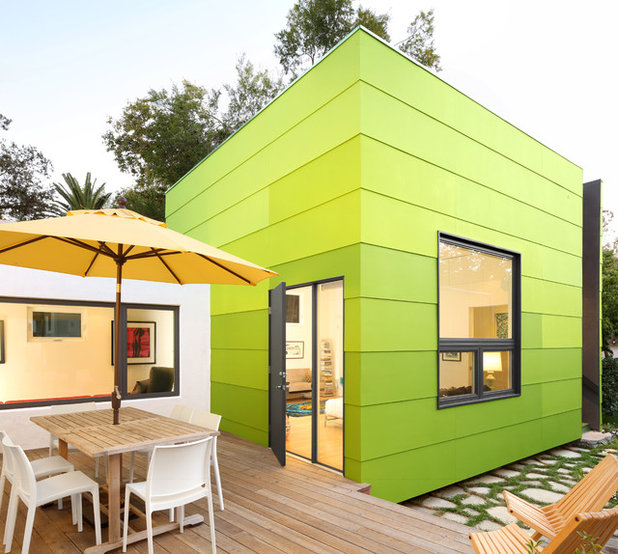
OKB Architecture
17. Show your style. Another eye-catching structure that makes a statement, this Los Angeles building is hard to miss. Look carefully at the exterior walls to see all the shades of bright green used.
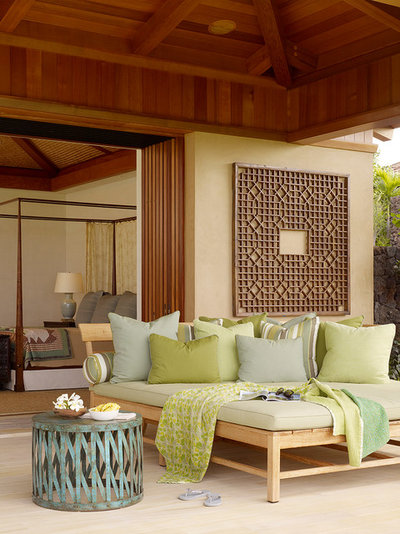
GM Construction, Inc.
18. Bring a sense of nature to outdoor living rooms. Pale green accents on this daybed create a soothing mood and combine well with wood trim and walls, bringing nature a little closer to the comforts of home.
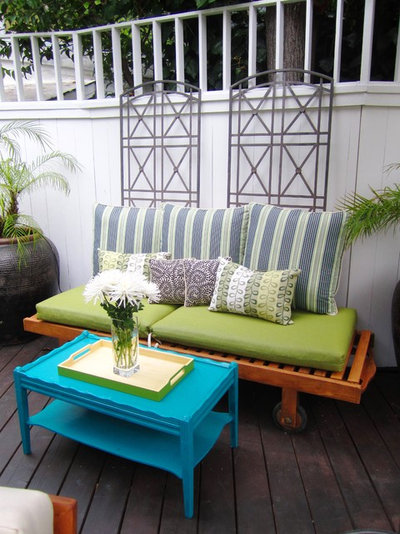
COCOCOZY
19. Create a hip patio with all-weather cushions. Lightweight pillows in lime green help anchor a seating area and visually tie in to the tall planters and surrounding vegetation. Give your patio cushions a fashion redo with a mix of bright greens.
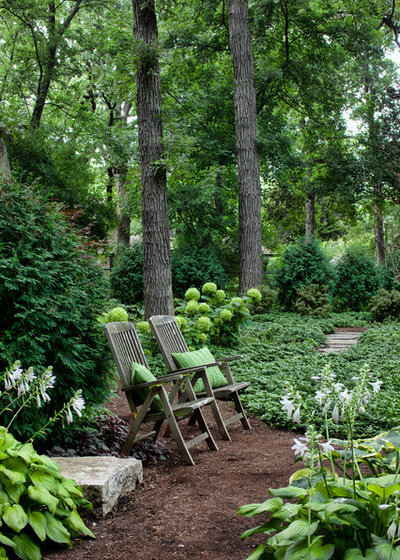
Hursthouse Landscape Architects and Contractors
20. Cool down. Make a backyard retreat more inviting with subtle variations of green, and put comfortable furniture in a location that allows for relaxation and comfort. When it's hot, nothing cools like green.





